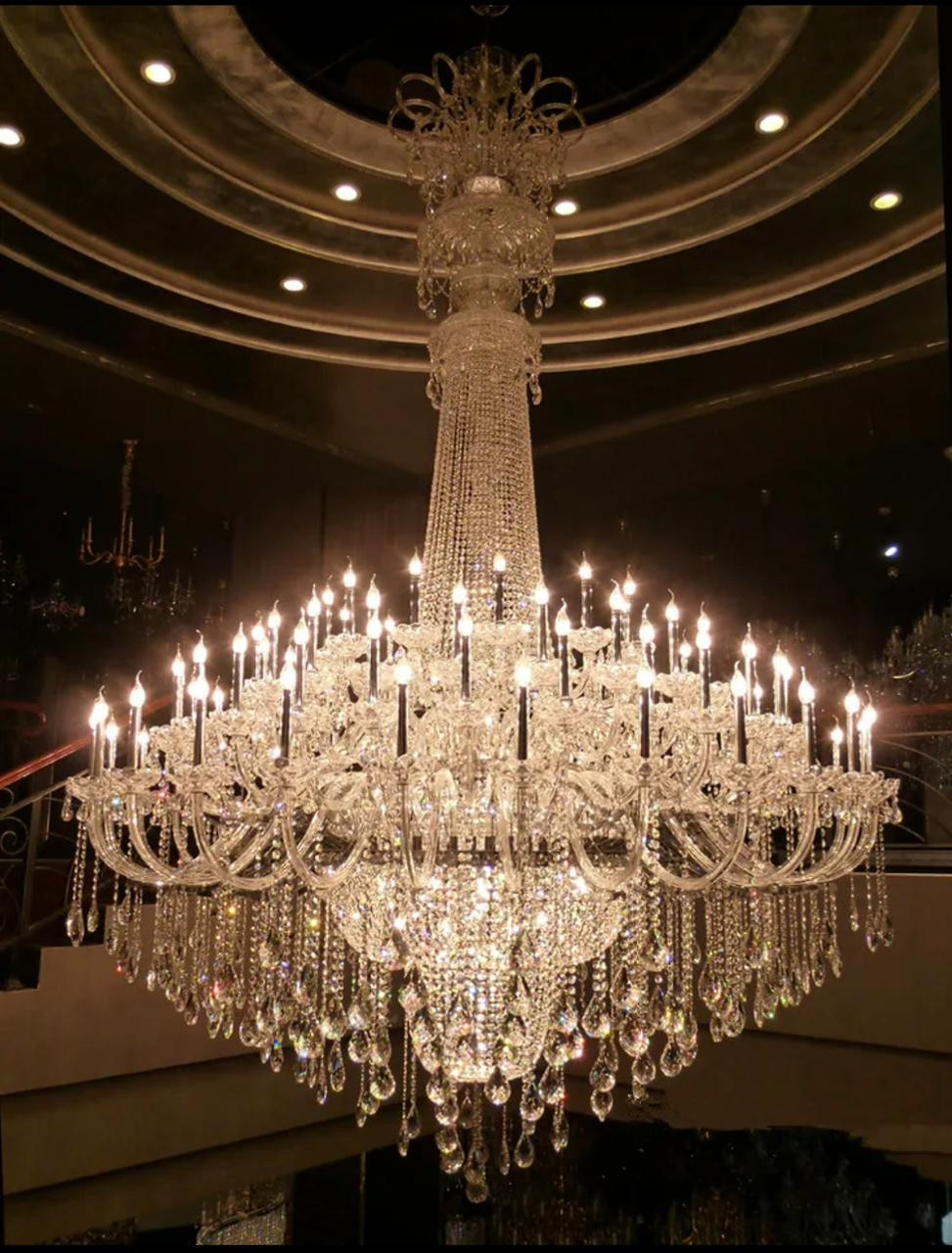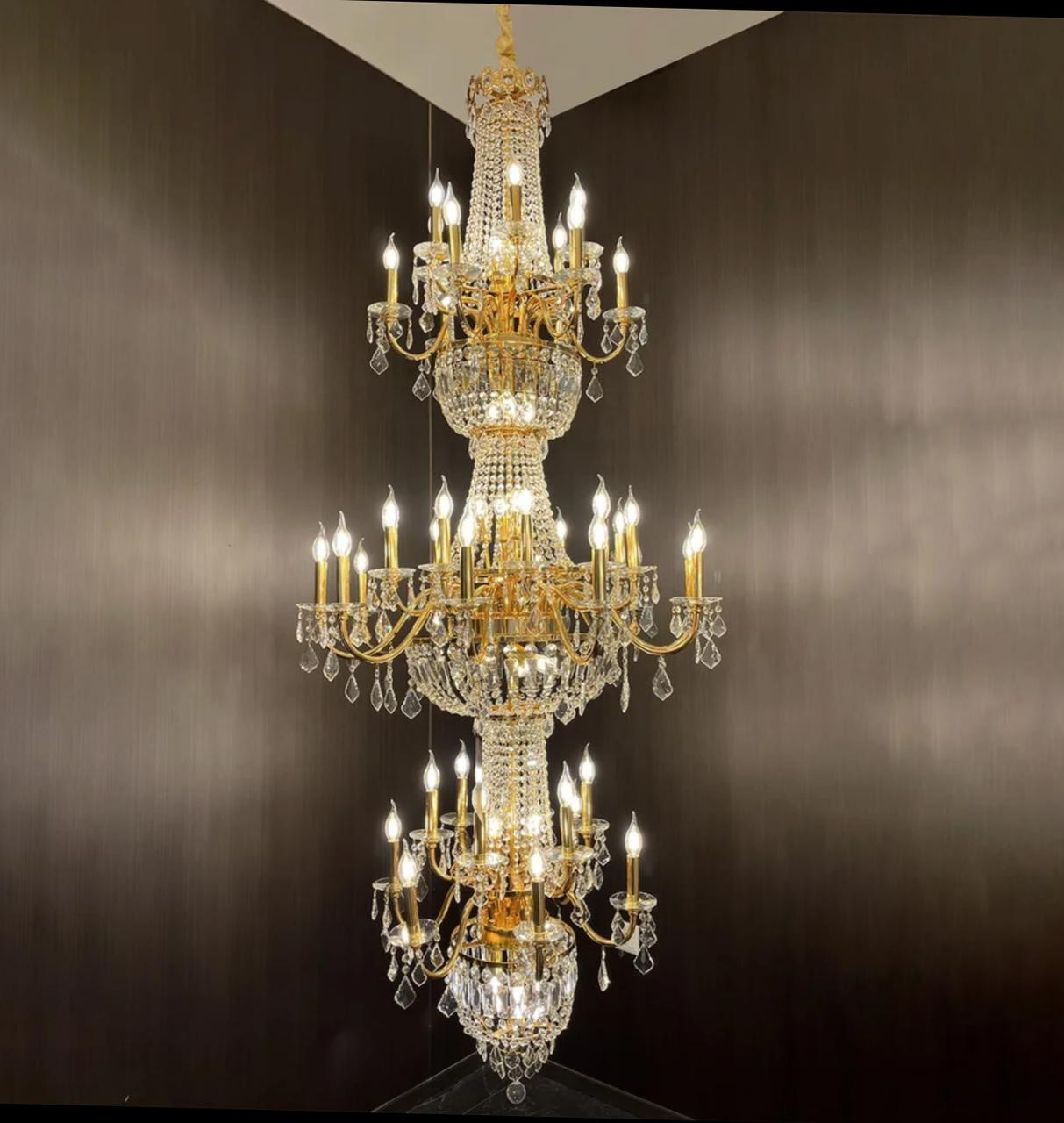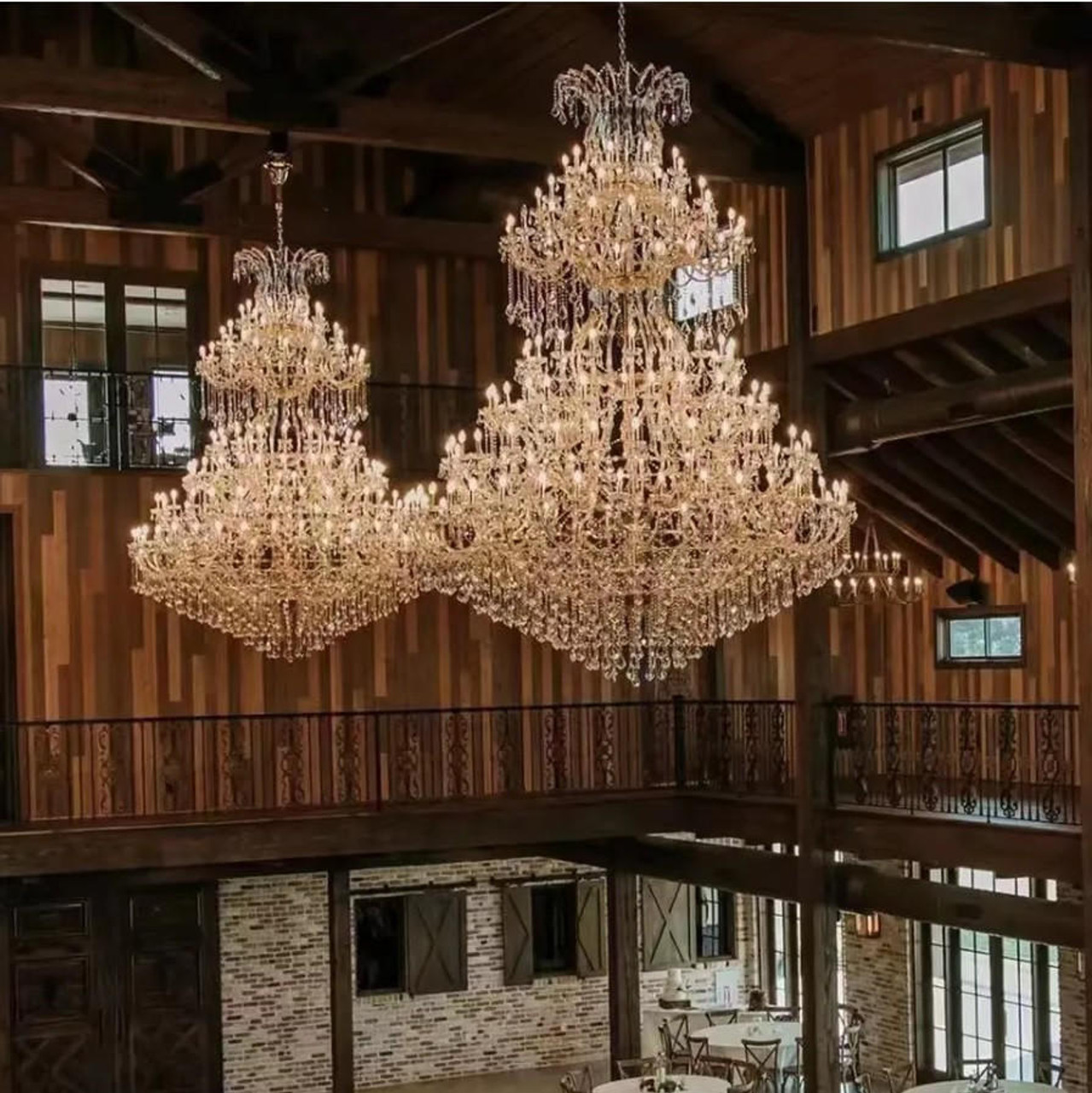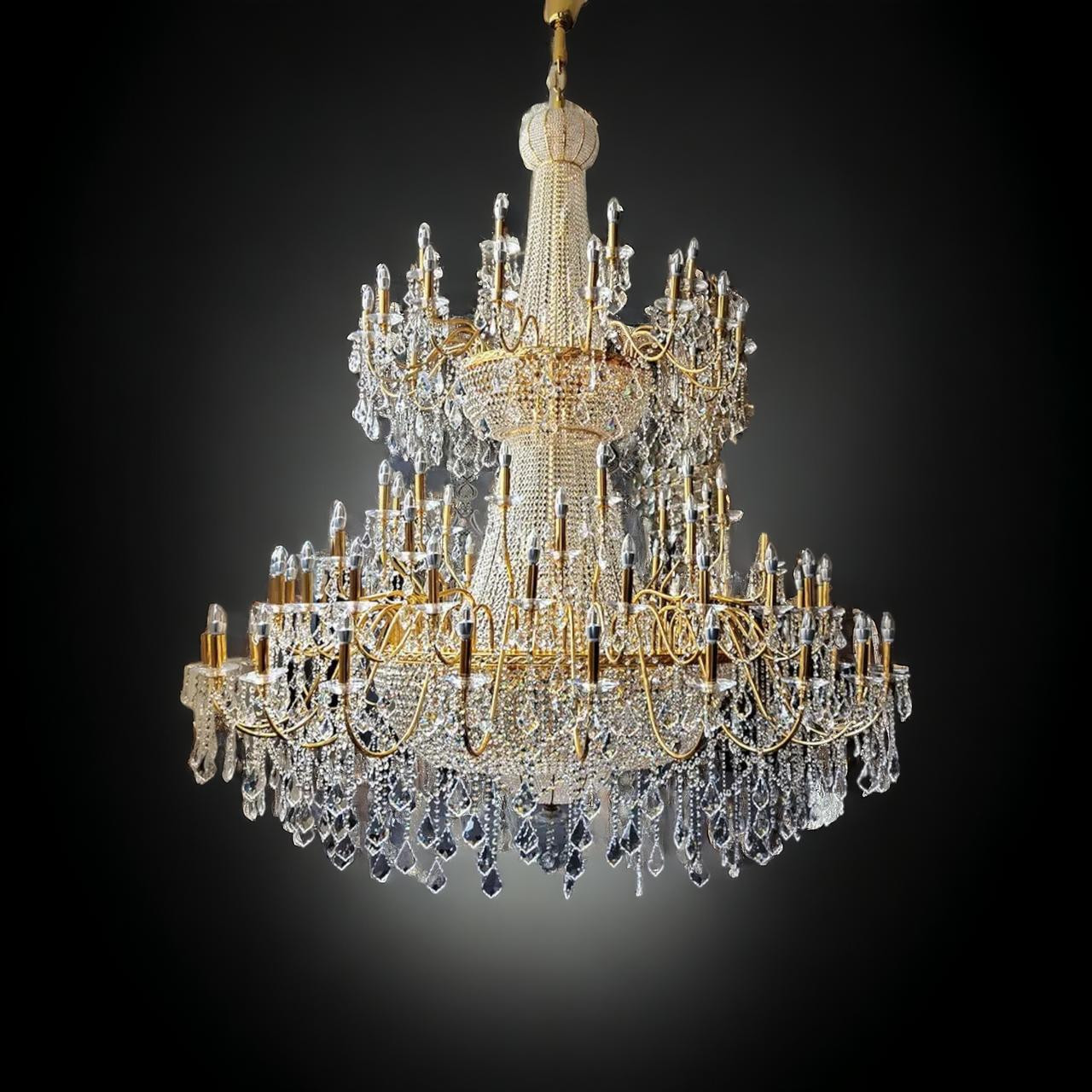Chandelier vs Recessed Lighting: Which Is Right for Your Space?
2nd Sep 2024
Lighting plays a crucial role in setting the ambiance and functionality of any space. Among the various lighting options available, chandeliers and recessed lighting stand out as two popular choices that cater to different aesthetic preferences and practical needs. But how do you decide which one is right for your space? In this blog, we'll compare chandelier vs recessed lighting in terms of design, functionality, installation, and cost, helping you make an informed decision for your home or office.
What Is a Chandelier?
Chandeliers are decorative lighting fixtures that hang from the ceiling, often featuring multiple arms or branches that hold light bulbs or candles. Historically associated with luxury and grandeur, chandeliers have evolved over the years to include a wide range of styles, from traditional to contemporary. They are typically used as statement pieces in dining rooms, entryways, living rooms, and even bedrooms.
Design and Aesthetics
Chandeliers are known for their ability to serve as focal points in a room. They come in a variety of materials, including crystal, glass, metal, and even wood, allowing them to complement different interior styles. Whether you prefer the opulence of a crystal chandelier or the modern simplicity of a metal design, chandeliers offer a versatile solution for adding character and elegance to your space.
The intricate designs of chandeliers can vary widely, with some featuring cascading crystals, ornate metalwork, or minimalist geometric shapes. This variety means that there is likely a chandelier to suit any taste, making it a popular choice for those who want to make a bold statement with their lighting.
Functionality and Light Output
Chandeliers are designed to provide ambient lighting, which is the general illumination of a room. They are particularly effective in spaces with high ceilings, where their hanging structure can distribute light evenly across the room. However, because chandeliers typically emit light from a central location, they may not always provide sufficient task lighting for activities like reading or cooking.
To address this, chandeliers are often paired with additional light sources, such as wall sconces or table lamps, to ensure that the entire space is well-lit. The light output of a chandelier can vary depending on the number of bulbs and the type of shades used, so it's important to choose a chandelier that provides adequate illumination for your needs.
Installation and Maintenance
Installing a chandelier requires careful planning, particularly when it comes to determining the appropriate height and placement. In rooms with high ceilings, a chandelier should hang at a height that allows it to be appreciated without obstructing the view or creating a safety hazard. In dining rooms, chandeliers are typically installed above the dining table, with a recommended height of 30 to 36 inches above the table surface.
Maintenance for chandeliers can be more involved compared to other types of lighting, especially if the fixture includes delicate materials like crystal. Regular dusting and occasional cleaning are necessary to keep a chandelier looking its best. For larger chandeliers, professional cleaning services may be required to ensure that all parts of the fixture are properly maintained.
Cost Considerations
Chandeliers can vary significantly in price, depending on the materials used, the size of the fixture, and the complexity of the design. High-end crystal chandeliers can be quite expensive, while simpler designs made from metal or glass may be more affordable. In addition to the cost of the chandelier itself, installation costs should also be considered, as professional installation may be required for larger or more complex fixtures.
What Is Recessed Lighting?
Recessed lighting, also known as can lighting or downlights, is a type of lighting fixture that is installed directly into the ceiling, creating a sleek and unobtrusive look. Recessed lights are often used in modern and minimalist interiors, where they provide a clean and streamlined appearance. These fixtures are versatile and can be used for general, task, or accent lighting.
Design and Aesthetics
Recessed lighting is characterized by its low-profile design, with the fixture sitting flush with the ceiling. This makes recessed lights a great option for spaces where you want the lighting to be functional but not visually dominant. Recessed lighting fixtures typically consist of a housing, trim, and bulb, with the trim being the only visible part of the fixture.
The minimalist design of recessed lighting makes it a popular choice for contemporary and modern interiors. Because the lights are installed within the ceiling, they do not interfere with the room's decor or sightlines, making them ideal for rooms with low ceilings or open floor plans.
Functionality and Light Output
One of the main advantages of recessed lighting is its versatility. Recessed lights can be used for general lighting, providing even illumination across a room, or for task lighting, such as above kitchen counters or in a home office. They can also be used for accent lighting, highlighting specific features in a room, such as artwork or architectural details.
The light output of recessed lighting can be easily controlled by the number and placement of the fixtures. For example, a series of recessed lights can be arranged to create a well-lit work area in a kitchen or to provide ambient lighting in a living room. Additionally, recessed lights can be equipped with dimmers, allowing you to adjust the brightness to suit different activities or moods.
Installation and Maintenance
Installing recessed lighting requires cutting holes in the ceiling and running electrical wiring to the fixtures, which can be more complex than installing other types of lighting. It is often best to have recessed lighting installed by a professional electrician, especially if you are retrofitting the lights into an existing ceiling.
Maintenance for recessed lighting is relatively simple, as the fixtures are typically durable and long-lasting. The most common maintenance task is replacing the bulbs, which can be easily done without needing to remove the fixture from the ceiling. LED bulbs, which are commonly used in recessed lighting, have a long lifespan, reducing the need for frequent replacements.
Cost Considerations
The cost of recessed lighting can vary depending on the type of fixtures used and the complexity of the installation. While individual recessed lights are generally affordable, the cost can add up if you need to install multiple fixtures to achieve the desired level of illumination. Additionally, if your ceiling requires significant modifications to accommodate the lights, this can increase the overall cost.
However, recessed lighting can be a cost-effective option in the long run, especially when using energy-efficient LED bulbs. These bulbs consume less energy and have a longer lifespan compared to traditional incandescent bulbs, resulting in lower energy bills and fewer replacements.
Chandelier vs Recessed Lighting: A Side-by-Side Comparison
Now that we’ve explored the individual characteristics of chandeliers and recessed lighting, let’s compare them directly in several key areas:
1. Design and Aesthetics
- Chandelier: Chandeliers are statement pieces that add visual interest and elegance to a room. They come in a wide variety of styles, from traditional to modern, making them suitable for different interior designs.
- Recessed Lighting: Recessed lights are minimalist and unobtrusive, making them ideal for modern interiors where a clean and streamlined look is desired. They do not interfere with the room's decor and can be used to highlight specific features.
Winner: This depends on your design preferences. Chandeliers are best for those who want a decorative focal point, while recessed lighting is ideal for a minimalist or modern look.
2. Functionality and Light Output
- Chandelier: Chandeliers provide ambient lighting and can be a focal point in a room. However, they may not provide sufficient task lighting on their own and often need to be supplemented with additional light sources.
- Recessed Lighting: Recessed lights are versatile and can be used for general, task, or accent lighting. Their placement can be customized to provide even illumination or to highlight specific areas.
Winner: Recessed lighting offers more versatility in terms of functionality and light output.
3. Installation and Maintenance
- Chandelier: Installing a chandelier can be more complex, especially for larger fixtures, and may require professional installation. Maintenance can be more involved, particularly for intricate designs that require regular cleaning.
- Recessed Lighting: Recessed lighting installation involves cutting holes in the ceiling and running electrical wiring, which can be more complex but results in a sleek and unobtrusive look. Maintenance is generally simpler, with occasional bulb replacements.
Winner: Recessed lighting may be easier to maintain, but both options can have complex installation processes.
4. Cost Considerations
- Chandelier: Chandeliers can range from affordable to very expensive, depending on the materials and design. Installation costs can also vary, especially for large or intricate fixtures.
- Recessed Lighting: While individual recessed lights are generally affordable, the total cost can increase if multiple fixtures are needed. Installation can also add to the cost, particularly if significant modifications to the ceiling are required.
Winner: Both options can be costly, but chandeliers have a wider price range, allowing for more budget flexibility.
Conclusion: Which Lighting Option Is Right for You?
The choice between chandelier vs recessed lighting ultimately depends on your personal style, the function of the space, and your budget. If you’re looking for a lighting fixture that doubles as a decorative focal point and adds elegance to your room, a chandelier is an excellent choice. Its variety of styles and materials allows you to find the perfect piece to complement your decor.
On the other hand, if you prefer a more minimalist and versatile lighting solution, recessed lighting is the way to go. Its ability to provide general, task, and accent lighting makes it a practical choice for many different spaces. Additionally, recessed lighting's sleek design is ideal for modern interiors where you want the focus to remain on the room’s architecture and furnishings.
Both chandeliers and recessed lighting offer unique advantages, so the decision ultimately comes down to your specific needs and preferences. By considering the factors outlined in this blog, you can choose the lighting option that best enhances the beauty and functionality of your space.





